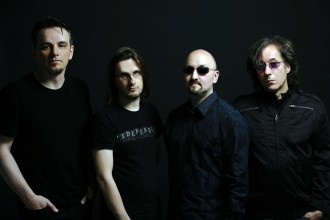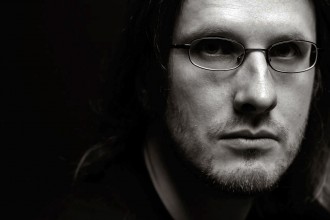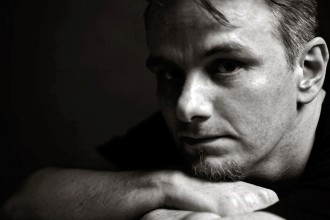Porcupine Tree Interview
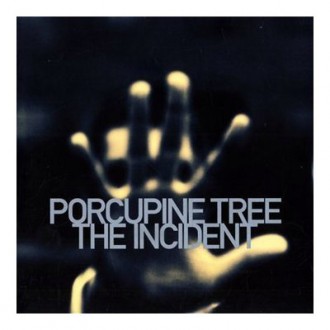 Steven Wilson Answered The Questions
Steven Wilson Answered The Questions
What’s behind the album title, THE INCIDENT?
The album’s called THE INCIDENT because the real starting point for me for the lyrics was an expereince I had driving home one night from the studio. I was on the motorway and I saw a very bad, presumably fatal, car accident. When things like that happen on the motorways of England, the police put up a sign saying, ‘Incident.’ It struck me as being a very detached, cold, kind of mechanical word for something that presumably was so traumatic and dramatic for the people involved. ‘Incident’- it’s one of those kind of neutral words. I could see all the people slowing down to look at the accident, and as I was driving by I had this kind of poetic moment, if you like, where I really felt the presence of the people that had presumably died in the car accident, in the car with me. So if I looked in the rear view mirror I could see the people in the back seat. It was a kind of poetic and surreal moment. Anyway, this word ‘incident’ stuck in my mind and seemed like a very iconic word. In a way the kind of word that says a lot about the society we live in that we have these incredible, dramatic, traumatic, tragic things happening all the time reported in the media, and we do become kind of almost immune to that kind of horrific news sometimes - aircrashes, terrorist activity. So that the fact that ‘incident’ is such a cold, mechanical and detached word seems somehow appropriate to me.
Describe the writing process and the 55 minute song cycle…
I started to write THE INCIDENT basically as soon as I finished my last record which was a solo record. I came out of that pretty tired, I was pretty exhausted and after having made one record, the idea of going straight back to the drawing board was kind of daunting, in a way. On top of that it has always been important to me to feel like every album has a reason to exist. In other words every album is kinda somehow different, an evolution from the previous work. I’m not interested in just making the same record, over and over again. And so I set myself the task of doing something quite different this time. I decided the thing that would be different this time would be that I would try to write, rather than a set of songs and then find the right way to sequence them, I would actually write long-style piece from beginning to end. And that’s the key really, that’s the difference. The difference here is that I started writing at the beginning and carried through to the end. When you do that, each part of THE INCIDENT was borne out of the preceding part, in the sense that a rhythm or chord sequence or melody would suggest how the next section would develop. So what you get is that natural, organic sense to flow acrosss the whole piece. Some people would look at it as 14 separate songs, in fact it’s indexed to 14 separate indexes and I think they can stand up as 14 separate songs too. But they have this seamless sense of flow and that’s partly because I did write actually write them in the order they actualy appear on the record, which is a very different approach and much harder actually. But I’m pretty pleased that I managed to pull it off.
How about the recording process?
The the process of recording we split THE INCIDENT into 5 different sections all about 10 minutes long. I think it would have been a bit too much to try to record it in one continous stream. But it was all written as a stream so it was a question of recompiling it when it was all recorded. We worked in a lot of different studios; we all have our own studios, we worked at Air Studios in London mainly to do the acoustic instruments (the guitars, the drums, the piano) and I think it’s probably our best sounding record to-date. We put in a lot of time and of
course we always learn from our mistakes on previous records and try to make everything sound better next time around. So hopefully this is the best sonic experience to-date.
The album will be released as a double CD. Could you explain the separation of the title track from the rest of the album…
For me the aim is two totally different listening experiences, two separate listening experiences. The whole thing about the long track… Very often today you buy CDs with bonus tracks tagged onto the end. I’m not a great fan of that. I grew up at the end of the great era of vinyl when you had two sides so you had two very distinct sequences of music. And if you were an artist you could actually programme your album to take advantage of this kind of division, you know, i.e. side one, side two. And you could create two very distinctive listening experiences - something that would begin to build up and peak in the middle, then gradually subside again as the side ends. So you had that sense of dynamics that you could create across two separate halves of a release. Of course we lost all that with CDs, they became one listening experience, and some artists would fill it up to the maximum capacity. I’m not sure that’s for the best. I’m a great believer that vinyl had something about it - think of all the classic album. Most of them come from the vinyl era and I don’t think that’s a coincidence. I think it’s something about the fact that albums were limited to around about 45 minutes, they had this kind of division - you almost had this pause for breath. And then you get these death metal bands making 80 minutes of this relentless pummelling death metal… I’m not putting down death metal but any kind of music that is very samey, to listen to any more than 20 minutes in one go I think I find very hard, maybe it’s just me. So anyway, all of this is a kind of way of saying that I came up with the idea of two halves of the listening experience. I’m not a fan of bonus tracks tacked onto the end of things, and ‘THE INCIDENT’ song cycle is meant to be a singular listening experience, not to finish and ten seconds later, ‘oh here’s another track.’ So although it might sound like a functional thing, the fact that you have to take one disc out and put another one in somehow makes makes more sense.
Page: 1 2
|
|

|

Soil |
LATEST GALLERY IMAGES

Crime Scenes 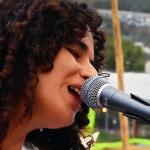
Good Neighbours |
|
|


